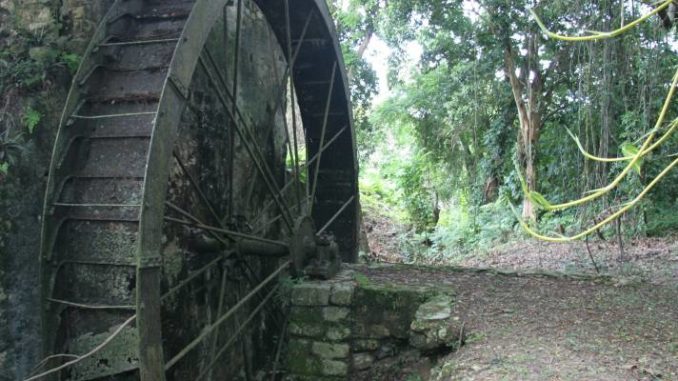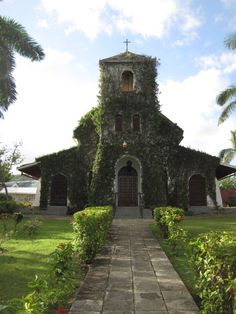

When the Spanish settlement of Sevilla la Nueva was moved from the coast to higher ground, construction of a cut stone Church was started in 1534 by Abbot Peter Martyr of Angleria, Italy. Only the Church walls were built as in 1534 the Spanish centre of Government was moved to Spanish Town. No plans of the Church were found but English historian, Hans Sloane refers to it “…the Church was not finished…built of a type of stone between free stone and marble, taken from the quarry about a mile up the hill…the west gate of the church was very fine work and stands entire, standing seven feet wide and as high before the arch began. Over the door in the middle was Our Saviour’s head with a crown of thorns.” This incomplete structure was known as the Peter Martyr Church. In 1770, Edward Long condemned the British for their apparent indifference to Spanish architecture in Jamaica and for allowing the Church to fall into ruin.
In 1925, the owner of the Seville Estate, Mr. William Hoskins gave title to five acres of land containing the Peter Martyr Church site to the Catholic Bishop. Mr. Hoskins felt that the site of the historic remains of the first stone church should be given back to the Catholic Church. The pastor for the area, Father Raymond Sullivan, began a vibrant fund raising campaign to build a church. It was decided that as far as possible only local material should be used in its construction. The Superintendent of the Public Works for St. Ann, Mr. Harold Brownlow was engaged as the architect and between 1939 and 1943; a beautiful “Spanish style” church was constructed from cut-stone and local timber. This Church which was named Our Lady of Perpetual Help Church, was built adjacent to the site of the Peter Martyr Church ruins and is located on the same property. In fact, some of the stones used in the construction of Our Lady of Perpetual Help Church originated from the structure of the Peter Martyr Church. This current Church is therefore forever linked and intimately associated with early Sixteenth Century Church.
